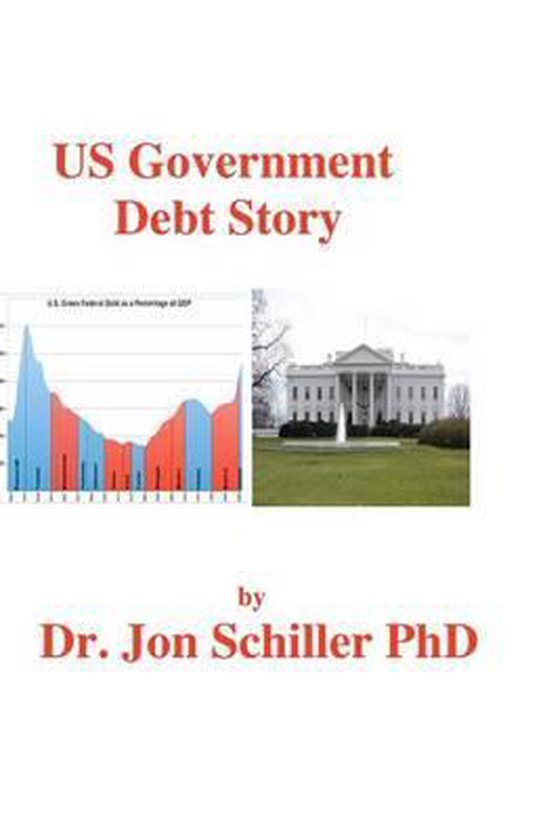US Government Debt Story
Afbeeldingen
Artikel vergelijken
Uitgever: Createspace Independent Publishing Platform
Auteur:
Jon Schiller
Dr Jon Schiller Phd
- Engels
- Paperback
- 9781466238596
- 24 augustus 2011
- 422 pagina's
Samenvatting
In mid 2011 the US finds it has a huge multitrillion dollar public deficit. This deficit grew to a level approaching the Gross Domestic Product which relatively speaking was challenging the debt reached during WWII when the debt exceeded the GDP.As I attempted to quantify in this book, the huge increase in public debt was caused by two very long wars: the Iraq war and the Afghanistan war, which was the longest war the US has ever waged.In 2008 the US economy entered into the deepest recession it has seen since the depression starting in October 1929 and lasting until WWII (1941). This 21st century recession caused revenues to diminish greatly. Huge bail out programs were necessary to save large US banks and manufacturing companies. Also the USG made expenditures to help that segment of the population most affected by the recession such as the unemployed and Senior citizens needing health care to stay alive.These factors caused the Public Debt to mushroom to the large size the US congress and administration in Washington worked so long to try to reduce. Their perceived lack of problem solving skills caused uncertainty in the financial markets which resulted in huge plunges in the stock market and the downgrading by one credit rating agency (S&P) to reduce the US's rating from AAA to AA+. This event resulted in a huge sell-off in the stock market and a big rise in the cost of Federal Bonds.This book attempts to present the happenings in a logical fashion so the reader can understand the severe strain it placed on the American citizens and financial system. The political struggle over raising the debt limit will intensify as the new 12 man Super Committee takes on the challenge of lowering the public debt.While polls show voters angry over the debt, and politicians support a goal of paying it down, the two principal deficit-reduction plans would merely restrain its growth for the next decade.Congress "would have to enact policies that would produce a surplus," with money left over to begin retiring debt, said Robert Bixby, executive director of the anti-deficit Concord Coalition.The last government surplus was in 2001. For one to occur in the future would require "Republican spending policies and Democratic tax policies," Bixby said, referring to GOP calls for deep program cuts, and Obama's support for higher taxes. "Right now (before the debt crisis) the two parties haven't been able to agree on those kinds of changes."The increase in debt woven into their budgets is not a fact that Obama Rep. Paul Ryan, R-Wis., chairman of the House Budget Committee, or any other official chooses to trumpet. The president and most lawmakers generally avoid saying directly that government debt will rise if their budget prevails — although they are careful not to claim it won't, either. Instead, they use similar, vaguely reassuring terms
Productspecificaties
Wij vonden geen specificaties voor jouw zoekopdracht '{SEARCH}'.
Inhoud
- Taal
- en
- Bindwijze
- Paperback
- Oorspronkelijke releasedatum
- 24 augustus 2011
- Aantal pagina's
- 422
- Illustraties
- Nee
Betrokkenen
- Hoofdauteur
- Jon Schiller
- Tweede Auteur
- Dr Jon Schiller Phd
- Hoofduitgeverij
- Createspace Independent Publishing Platform
Overige kenmerken
- Extra groot lettertype
- Nee
- Product breedte
- 140 mm
- Product hoogte
- 28 mm
- Product lengte
- 216 mm
- Verpakking breedte
- 140 mm
- Verpakking hoogte
- 28 mm
- Verpakking lengte
- 216 mm
- Verpakkingsgewicht
- 485 g
EAN
- EAN
- 9781466238596
Je vindt dit artikel in
- Categorieën
- Taal
- Engels
- Boek, ebook of luisterboek?
- Boek
- Studieboek of algemeen
- Studieboeken
Kies gewenste uitvoering
Bindwijze
: Paperback
Prijsinformatie en bestellen
Rapporteer dit artikel
Je wilt melding doen van illegale inhoud over dit artikel:
- Ik wil melding doen als klant
- Ik wil melding doen als autoriteit of trusted flagger
- Ik wil melding doen als partner
- Ik wil melding doen als merkhouder
Geen klant, autoriteit, trusted flagger, merkhouder of partner? Gebruik dan onderstaande link om melding te doen.

